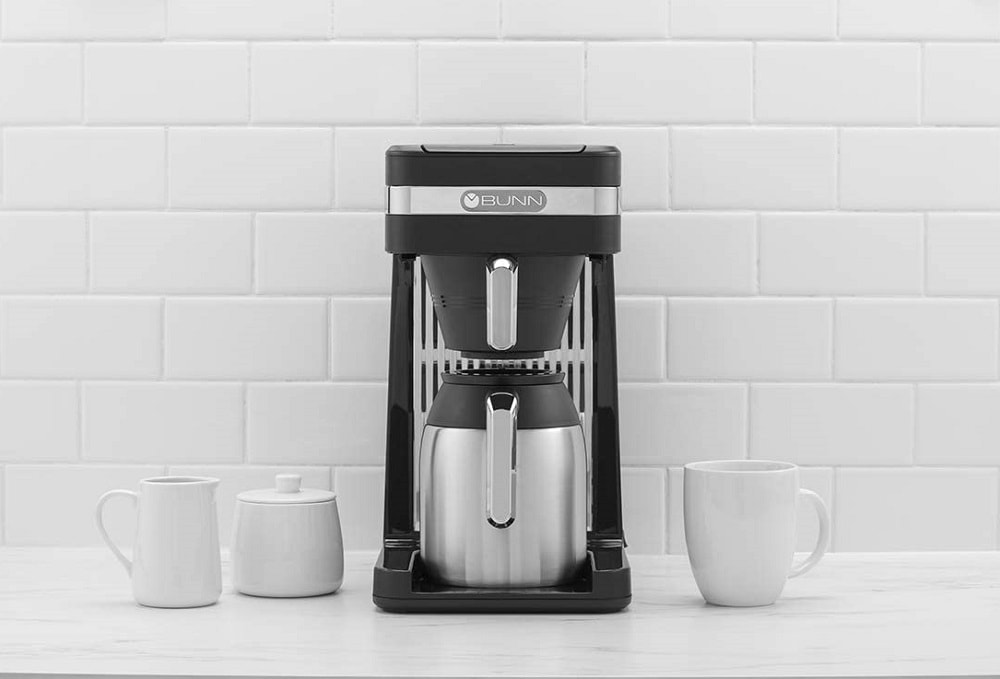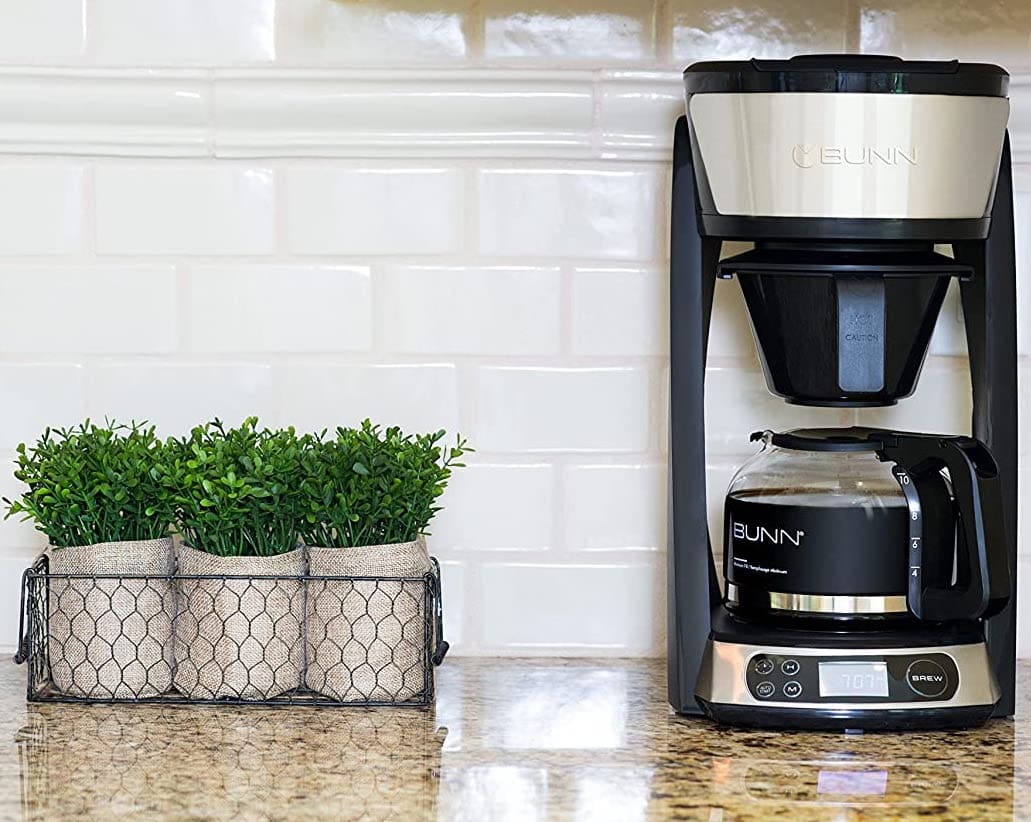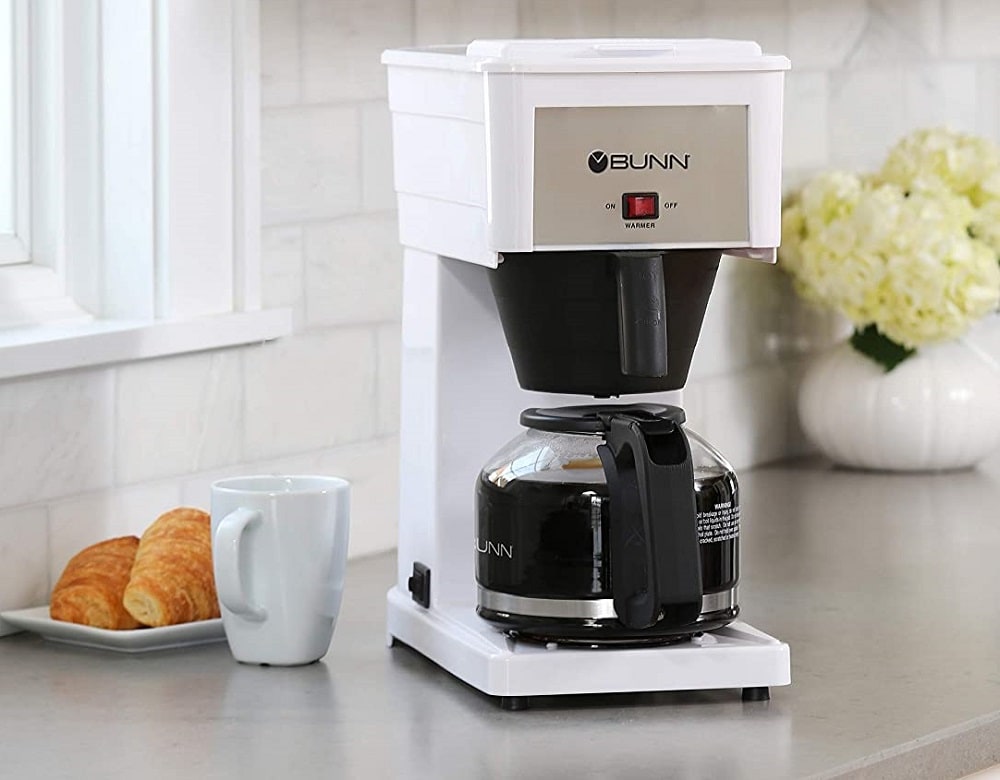

Bunn is one of the leading producers of coffee makers worldwide. Their machines are found in professional settings like cafes and diners and the homes of coffee lovers. Bunn machines are renowned for their reliability and longevity, but only if they’re correctly cared for with regular cleaning and maintenance. Making coffee takes a surprising toll on coffee machines, and without frequent cleaning, your coffee maker might start producing funny-tasting coffee or even break down completely.
In this article, we’ll teach you how to clean a Bunn coffee maker to extend its lifespan and keep your coffee tasting great. It’s not too tricky, but there are a few handy tips and tricks you should know that will make cleaning your machine much easier.

It is going to be helpful to have some supplies on hand before you get started. Most of the pieces of equipment needed are basic household items, except for a spray head cleaner. Bunn makes a specialized tool designed for cleaning the spray head on their machines. It is not strictly necessary to use a spray head cleaner, but having one makes the process much easier. They aren’t too expensive, so you should consider picking one up.

We recommend cleaning your Bunn coffee maker once a week at a minimum. The more often you clean your machine, the better, but one to two cleanings per week strikes a good balance between cleanliness and effort.
Unfortunately, cleaning is only half the battle. Coffee machines can build up mineral deposits over time, especially in regions with hard water. Scale deposits are mostly made of calcium that gets left behind when water evaporates on a surface. If you leave scale deposits in your machine, they will build up and could eventually clog your machine entirely.
Thankfully, descaling a Bunn coffee maker is a relatively quick and painless process. Here’s how to do it.

Many people wonder how often they should descale their coffee machine and, unfortunately, it’s impossible to give a one-size-fits-all answer. If you live in an area with very hard water, you might have to descale your machine as often as once a week. On the other hand, if your water isn’t hard, you might only have to describe it once or twice per year.
An easy way to judge your water’s hardness level is to look in your bathtub and sinks. If there is a white deposit that forms around the drain, you have hard water. If you’re still unsure after checking your drains, you can purchase a water testing kit and determine your water’s hardness level quantitatively. However, it’s usually not necessary to go into that level of detail.

We'll teach you how to clean a Bunn coffee maker to extend its lifespan and keep your coffee tasting great. It's not too tricky, but there are a few handy tips and tricks you should know that will make cleaning your machine much easier.
Prep Time 4 minutes mins
Active Time 6 minutes mins
Total Time 10 minutes mins
Make sure the machine is off before you start cleaning it. Unplug the machine from the outlet to eliminate the possibility of accidentally turning it on mid-clean.
Prepare a mixture of mild detergent or soap and warm water. You will use this solution for cleaning the outside of the machine.
Soak a cloth in the detergent solution and thoroughly wipe down the outside of the machine. Make sure you don't miss any spots, paying careful attention to the area around the spray head.
Rinse the cloth and wipe down the machine again to remove the detergent. It is important not to let the detergent linger on the surface for too long. Even mild detergents can cause damage if they are left in contact with susceptible surfaces for too long.
Remove the spray head from the machine. Using the spray head cleaning tool or another pointed object, remove any built-up coffee residue from the spray head openings. This step can be time-consuming depending on how long it has been since you last cleaned the spray head. Take your time and make sure the spray head isn't clogged before moving on to the next step.
While the spray head is still detached, use the long end of the spray head cleaning tool—or another similar tool—to clean inside the spray head housing. This is a common trouble area prone to mineral deposits and residue, so don't be surprised if there is a lot of buildup to remove.
Reattach the spray head to the machine and enjoy your newly cleaned Bunn coffee maker.Make a solution of one part vinegar to two parts distilled water. Vinegar is acidic and can easily break down calcium deposits. Make enough solution to fill your Bunn's coffee pot.
Pour the descaling solution into your coffee maker and initiate a brewing cycle.Perform at least three to five rinses by running a brewing cycle with only water. If you don't rinse the machine enough after descaling, your coffee will have an unpleasant vinegar taste.
It will be helpful to have some supplies on hand before you get started. Most of the equipment needed are household items, except for a spray head cleaner. Bunn makes a specialized tool designed for cleaning the spray head on their machines. It isn't strictly necessary to use a spray head cleaner, but having one makes the process much easier. They aren't too expensive, so you should consider picking one up.

Learning how to clean your Bunn coffee maker is not as fun as learning how to make great coffee with it, but it is important. With regular care and maintenance, a Bunn coffee maker can churn out delicious coffee consistently for many years. Hopefully, this guide has helped you learn how to properly care for your machine and has taken the guesswork out of what can be an intimidating process if you’ve never done it before.
RELATED READS: